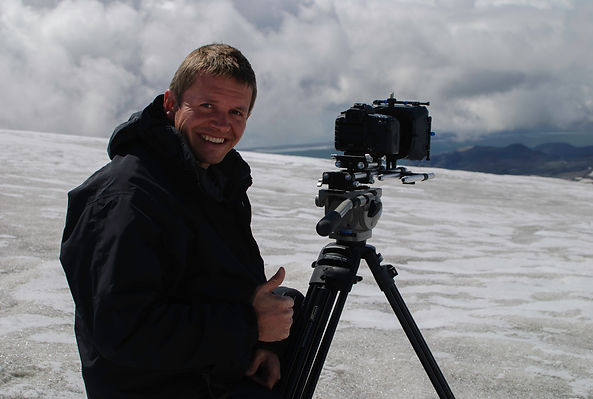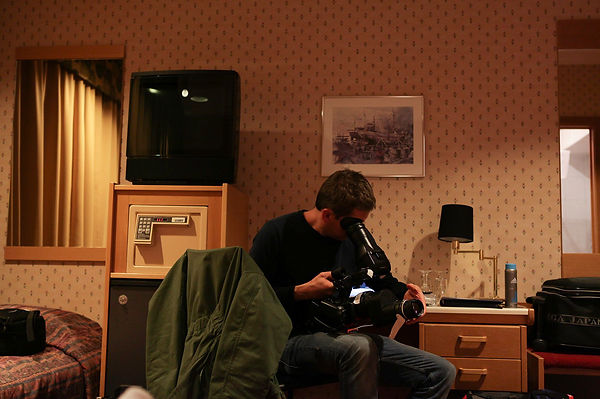

Little compares to the power of a volcanic eruption. For many years the Icelandic people have lived side by side with these forces of nature. This feature-length documentary explores this special relationship between the people of Iceland and the lava on their doorsteps.


SYNOPSIS
Iceland is a country of volcanos, known as the “Land of Fire and Ice”, she is covered in lava fields and peppered with glaciers. Despite being one of the world’s most volatile places to live, for those who call this island home, living so close to the forces of nature is a way of life.
Using volcanos as a thread, we documented the lives of communities along the southern coast of Iceland that have been shaped in some way by living close to the lava.
CREW
I spent a year reading up on Iceland's rich history of volcanic eruptions but knew the the film couldn't feature them all, so I narrowed it down to a select few.
With a past, present and future approach we focussed on three; Eldfell, Eyjafjallajökull and Katla.
After a year of research and planning, I assembled a small team and we flew off to the 'Land of Fire and Ice'.
We spent three weeks over the summer or 2011 immersing themselves with contributors whose lives are closely connected to these three volcanos.

JOE CHAPPEL
Camera

TIM LEWIS
Sound

DRAGOMIR DRAGOSTINOV
Producer


ALFRED GEORG ALFREDSSON
Fixer / Local Guide
.jpg)
TRAUSTI ÍSLEIFSSON
Specialist Driver

LINDA MARIE TRAUSTADOTTIR
Specialist Guide

THEO MAXIMILIAN GOBLE
Director

REYNIR RAGNARSSON
Pilot / Contributor
SHOOTING THE PAST
We begin by taking the viewer back in time to recall the 1973 eruption on the island of Heimaey. These dramatic events just off the south coast saw the entire population of Vestmannaeyjar flee as the lava from Eldfell swallowed their homes. Speaking candidly for the first time since the eruption the subjects we met recall the pain of family separation, destruction to their land and homes, perseverance as they fought to protect their islands very existance and the rejuvenation at the eruption’s end.

Local guide and fixer, Alfred Georg Alfredsson relaxing with Kristin and her daughter Aldis.
They were forced to leave their home a few hours after the eruption began.

Soundman Tim Lewis in front of a home that was partially crushed by the flowing lava
on Vestmannaeyjar.
The eruption of 'Eldfell' (Fire Mountain) lasted for almost six months and the lava covered many homes. Most of the islanders were evacuated to the mainland. Meanwhile, a brave few stayed behind and fought hard to prevent the the lava from covering the mouth of their life-sustaining harbour.

Sigurdur Oskarsson Ragnarsson looking out at the lava fields he once fought against.

The ancient Eldfell standing above the town of Vestmannaeyjar. Lava rock from the 1973 eruption covers the south-eastern side of the island.

Camerman Joe checking back material at the hotel.

Producer Dragomir inspecting kit.

Theo cleaning volcanic ash off the camera lens.
Just a year had passed since the eruption of Eyjafjallajökull
on the mainland and there was ash everywhere.
Now part of Icelandic folklore, the story of 'Man against Volcano' kicks off our film before we jump ahead to a more recent event, one that affected not only the those of Iceland, but people all across the world.
SHOOTING THE PRESENT
Four decades later an eruption on the 'Island Mountain Glacier' (Eyjafjallajökull) turned the eyes of the world towards Icleland. International air travel was ground to a halt due to the threat of volcanic ash spread out far into the atmoshphere. Down on the ground, particularly for the farming familiies living at the base of Eyjafjallajökull, the destruction was severe.
The awaking of Eyjafjallajökull in 2010 brings the film’s narrative to the present. This volcano caused disruption to air travel around the world. The inconvenience inflicted on the international community quickly passed, but for those who live below the shadow of the Eyjafjallajökull glacier, the consequences were felt for years.
We had the honour of visiting farms and homesteads along the base of the glacier, witnessing firsthand how much the farmers land and livelihoods had been affected.

Stóra-Mörk III farm sits at the foot of the Eyjafjallajökull glacier. The lush green grass was recently covered in a blanket of ash.


Stóra-Mörk III farmer Ásgier looks out at the land his family have farmed for hundreds of years. As far as the eye can see there is nothing but ash.

To tell the story of those who live at the base of Eyjafjallajökull, it was important to get up onto the glacier itself. To help us achieve this we hired a monster jeep from a company called 'Hólasport - Secret Iceland'.
.jpg)
Specialist driver TraustiI Ísleifsson in his super jeep.
They supplied not only the vehicle, but most importantly the expertise needed to get us up onto the ice and down into the volcano's crater. Iceland can be a dangerous place if you do not know what you are doing. The landscape needs to be respected so those with local knowledge of the terrain is highly recommended.

The first slope up onto Eyjafjallajökull was steep and we all had to get out whilst driver, Trausti Ísleifsson crept up a few centimitres at a time.

We made it up onto the ice, the sun came out and we got out to get a few shots of the glacier.

The storm passed and we made our way right into the heart of the Eyjafjallajökull crater.

I was afraid we would never make it up but Trausti continued to edge up the slope.

A snow storm hit and we had to wait a few hours in the jeep. There was zero visability and I was worried we wouldn't get our crater footage.

We got our shots and then the storm returned. With zero visability the jeeps computer alllowed us to retrace out path safely back down the glacier.
SHOOTING THE FUTURE
Finally the viewer is introduced to the sleeping 'Katla', named after an 'angry little troll'.
Katla’s last major eruption was in 1918 and she is due to awaken. We looked ahead to what may be expected and the precautions in place for those who live at the foot of Katla's home, the mighty Vatnajokull Glacier.
CONTRIBUTORS
The stories told in 'Living with Lava' are told by the locals in their native Icelandic language.

SIGURDUR OSKARSSON RAGNARSSON
Participated in the 1973 battle to save Vestmannaeyjar

KRISTIN FRIMANNSDOTTIR
Vestmannaeyjar resident during the eruption of Eldfell

ANNA BJORK OLAFSDOTTIR
Farmer affect ed by the eruption of Eyjafjallajökull in 2010

OLAFUR EGGERTSON
Farmer whose farm was directly beneath Eyjafjallajökull

LILJA RUT ASGEIRSDOTTIR
BJARKI POR SEVARSSON
Kids who play at the base of Eyjafjallajökull

ALDIS ATLADOTTIR
Vestmannaeyjar resident during the eruption of Eldfell


REYNIR RAGNARSSON
Vík í Mýrdal pilot who observes the sleeping Katla from above

OLAFUR PETURSSON
Witness to the 1918 Katla eruption
FESTIVAL SCREENINGS




